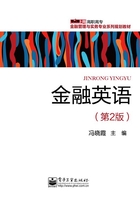
Unit Five
Check
Part A Background Information

Checks are the most common form of negotiable instrument and are the preferred method of payment for many debts.They offer convenience for both writer and recipient, a relatively high degree of safety, and a record of transactions.They are accepted for most transactions when supported by appropriate identification, and their common and recognizable form makes them a part of normal life for most people.
When you write a check, you may issue it to the person whose name is on the payee line, but you are really writing it to your bank.You are directing the bank to pay the sum “to the order of ” the recipient.
Most people immediately recognize standard features of personal checks.
●Check number is the number of the check being written.
●Date is the date the check is written.Post-dated or pre-dated checks violate most bank deposit agreements.
●Payee is the receiver of the funds.This line directs the bank to “pay to the order of ” a specified party.
●Amount spaces allow for the amount of the check to be entered in both numbers and words, to minimize errors.In the event the words and numbers don’t match, the amount written in words takes precedence.
●Signature is a valid signature of the maker of the check.Banks usually will not negotiate checks without a signature.
●Memo is an optional entry to note the check’s purpose or other information.
●Identification numbers show the check number, the bank routing number, and the account number.These numbers are printed with magnetic ink in machinereadable characters, called magnetic ink character recognition(MICR) numbers.